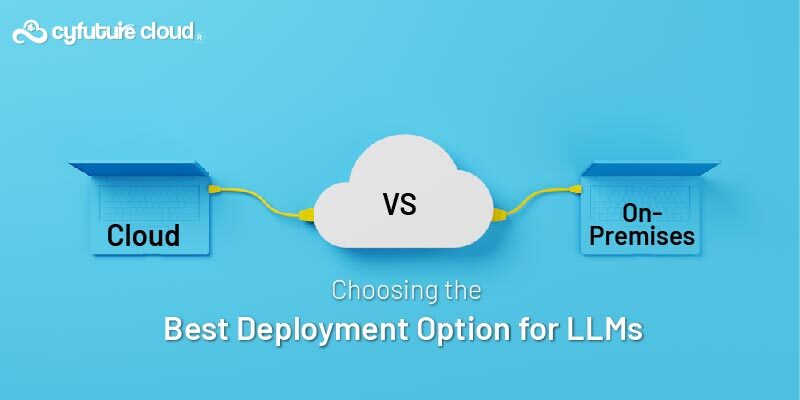Table of Contents
- Understanding Storage as a Service (STaaS)
- Features and Characteristics of STaaS
- How Does Storage as a Service Work?
- Types of STaaS Solutions
- Why Use STaaS?
- The Key Advantages of STaaS
- Use Cases for Storage as a Service
- How to Choose STaaS
- How to Choose the Right STaaS Provider
- Conclusion: Embracing the Future of Data Management
In today’s fast-paced technological landscape, data has emerged as the lifeblood of businesses. The effective management, accessibility, and storage of data have become indispensable for both daily operations and the formulation of strategic decisions.
According to market research, the rise of data backup either on the cloud or physical archives is fast becoming the need of the hour across business verticals. The global market for data backup and recovery is predicted to rise from $5 billion in 2020 to $9.8 billion in 2027. The industry’s growth rate is expected to be 9.8 percent between 2021 and 2027.
The growing adoption of hybrid cloud storage, along with the proliferation of the Internet of Things (IoT), blockchain, big data, artificial intelligence/machine learning (AI/ML), social media platforms, and other rapidly expanding applications, has fueled the demand for storage solutions.
In response to this demand, Storage as a Service (STaaS) has emerged as a transformative force. It represents a fresh chapter in data management, offering enterprises newfound flexibility, scalability, and cost-effectiveness. In this blog, we’ll delve into Storage as a Service and explore how it is revolutionizing data management for the benefit of businesses.
Understanding Storage as a Service (STaaS)
Storage as a Service, often abbreviated as STaaS, represents a cloud-based data storage solution where a third-party provider furnishes businesses with on-demand storage services. In contrast to the traditional approach of maintaining physical data centers and storage infrastructure, organizations can harness these services to efficiently store and manage their data. STaaS is delivered via the internet and is typically charged on a pay-as-you-go basis, rendering it a cost-effective and flexible solution that easily adapts to evolving storage requirements.
Features and Characteristics of STaaS
The following are the characteristics of storage as a service in the cloud computing model:
On-Demand Storage Provisioning
STaaS enables customers to immediately deploy storage capacity depending on their unique requirements. Users may simply scale up or down their storage capacity as needed without having to install actual hardware.
Accessibility and Availability
STaaS allows data to be accessed from any location with an internet connection. Users may access their data from a variety of devices, allowing for seamless collaboration and remote access.
Data Redundancy and Replication
To ensure data durability and availability even during hardware failures or disasters, most STaaS providers incorporate data redundancy and replication across different data centres.
Scalability
STaaS solutions are built to scale elastically, allowing customers to readily increase storage capacity as their data requirements rise. This adaptability enables enterprises to respond to changing storage needs.
Security and Encryption
STaaS providers prioritise data security and use strong encryption measures to keep sensitive data safe from unauthorised access and cyber threats.
Automated Backup and Recovery
STaaS systems frequently incorporate automatic backup and recovery capabilities. Regular backups protect data integrity and allow users to recover their data to a specific point in time if necessary.
Storage Tiering and Performance Optimization
Some STaaS providers feature storage tiering options, allowing customers to optimise performance and costs by categorising data depending on access frequency and criticality.
Centralized Management
STaaS solutions often include centralised management consoles that let customers to effectively monitor, control, and manage their storage resources.
Service Level Agreements (SLAs)
STaaS providers frequently issue SLAs that contain performance assurances, uptime pledges, and data availability guarantees, guaranteeing customers of the service’s dependability.
How Does Storage as a Service Work?
Storage as a Service (STaaS) falls under the umbrella of cloud computing, delivering on-demand storage capacity via the Internet. Just like many other cloud services, STaaS operates on a subscription model, where customers pay for the storage they actually use. The responsibility of hardware maintenance, data backups, and security measures lies with cloud service providers. This approach empowers businesses to access storage solutions that are not only scalable and cost-effective but also fortified with security, all without the need for hefty investments in on-premises equipment.
Types of STaaS Solutions
The following are the primary types of STaaS solutions provided by CSPs:
- Object-based storage—If your company has a lot of cold data, object-based storage might be handy. This sort of storage is elastically scalable, and metadata is connected to each file to facilitate information retrieval.
- File storage—organizes data into easily accessible structures, such as file directories. Although more difficult to scale, this sort of storage is appropriate for integration projects and legacy systems, and it is compatible with cold or hot storage.
- Block storage—divide and partition data into blocks for quick access. It simulates the process of writing data to a solid-state drive or a conventional hard disc. The better the efficiency, the higher the cost. This method of storage is often recommended for warm or hot data.
Why Use STaaS?
Storage as a service is advantageous for smaller firms that lack the storage people or experience to run a cloud environment. Many small to medium-sized businesses may not even have a formal storage team, and their IT and security teams are preoccupied with other activities that leave little time for storage management. STaaS offloads most of the human administrative labour to a specialised provider, providing a solid storage solution without the upkeep that comes with it to stretched-thin IT teams.
STaaS also reduces costs for many enterprises. Hardware is costly, as is the software needed to control it. Many service providers only charge clients for the resources they actively use, reducing cost waste.
STaaS saves physical space as well. Businesses may lack the office space required to house the infrastructure required to keep their data. Data centres have a considerable footprint, and even large server rooms are too large for many urban high-rises or small-town enterprises. Organisations that cannot afford to acquire or develop the real estate required to support a large storage system benefit from storage services.
The Key Advantages of STaaS
Scalability: Scalability is one of the most major benefits of STaaS. Businesses may quickly expand or reduce storage space based on their current needs. This adaptability is crucial for businesses experiencing growth or changes in data storage requirements.
Cost-Efficiency: Traditional data storage involves significant capital expenses, from hardware to maintenance. STaaS eliminates these costs, as it’s an operational expenditure. Organizations pay only for the storage they use, reducing overall expenses.
Reliability and Redundancy: Reputable STaaS providers offer high levels of reliability and data redundancy. Data is often stored in multiple locations to ensure business continuity and data recovery in case of unforeseen events.
Accessibility: STaaS allows data to be accessed from anywhere with an internet connection. This enables remote work, collaboration, and seamless data retrieval, benefiting businesses with distributed teams.
Security: Top STaaS providers implement robust security measures to protect stored data. Encryption, access restrictions, and compliance with data protection rules are all part of this.
Simplicity and Management: STaaS simplifies data management. Organizations can delegate the responsibility of maintaining and upgrading storage infrastructure to the service provider, allowing internal IT teams to focus on more strategic tasks.
Use Cases for Storage as a Service
STaaS finds application across various industries and scenarios:
Data Backup and Recovery: STaaS ensures reliable backup and recovery solutions, protecting critical data from loss or corruption.
Archiving: Businesses can archive historical data without the need for additional on-premises storage.
Content Delivery: STaaS facilitates the delivery of multimedia content, ensuring fast and reliable access for users.
Big Data and Analytics: Organizations leverage STaaS for storing and processing large datasets for analytics and insights.
Disaster Recovery: STaaS provides redundancy and data recovery options, vital in disaster recovery planning.
How to Choose STaaS
To find out if storage as a service is right for you, consider the following questions:
- Does your technology department have experienced storage employees?
- Does your budget allow for STaaS prices?
- Do you have the physical space to install servers and storage arrays?
- If not, how long will it take you to build such an infrastructure?
Your company may elect to use STaaS for the time being while investing a few years in developing its own storage infrastructure. You may also choose to pay for cloud storage for a subset of your apps while keeping others on-premises. Data storage is adaptable, and STaaS contributes significantly to that adaptability.
How to Choose the Right STaaS Provider
Choosing the right Storage as a Service (STaaS) provider is a critical decision for businesses looking to streamline their data management. Here are key steps to guide you in selecting the most suitable STaaS provider for your needs:
Assess Your Storage Requirements:
Start by understanding your organization’s storage needs. Consider factors such as the volume of data, data type (structured or unstructured), data growth rate, and the specific use cases for data storage (e.g., data backup, archiving, analytics). This assessment will help you determine the amount of storage you require.
Scalability:
Ensure the STaaS provider can accommodate your organization’s future growth. Look for providers that offer scalable storage solutions, allowing you to increase or decrease your storage capacity as needed without significant disruptions.
Data Security and Compliance:
Data security is paramount. Verify that the STaaS provider implements robust security measures, including data encryption, access controls, and compliance with relevant data protection regulations (e.g., GDPR, HIPAA). Assess their data center security and redundancy features.
Service-Level Agreements (SLAs):
Review the provider’s SLAs, paying close attention to uptime guarantees and response times for support and issue resolution. Ensure their SLAs align with your business’s operational requirements.
Cost Transparency:
Understand the pricing structure and billing model. Be clear about what is included in the service and any additional charges for data transfer, retrieval, or specific features. A transparent pricing model will help you avoid unexpected costs.
Data Redundancy and Backup:
Inquire about the provider’s data redundancy and backup strategies. Data redundancy ensures that your data is replicated in multiple locations for reliability and disaster recovery. Ask about their backup frequency and data retention policies.
Data Accessibility:
Check if the STaaS provider offers reliable and efficient data access mechanisms. Consider factors like data transfer speeds and accessibility from various locations and devices, as this is crucial for remote work and data collaboration.
Technical Support:
Evaluate the quality and availability of the provider’s technical support. Ensure they offer 24/7 support, and review their reputation for responsiveness and issue resolution. A responsive support team can be crucial in minimizing downtime and addressing technical challenges.
Service Customization:
Different businesses have unique storage needs. Look for a provider that allows you to customize your STaaS solution to match your specific requirements. This flexibility ensures that the service aligns with your business goals.
Provider Reputation and Reviews:
Research the provider’s reputation and read customer reviews and testimonials. This can provide insights into the real-world experiences of other businesses that have used the service.
Trial Period or Proof of Concept:
If possible, opt for a trial period or proof of concept to test the service before committing to a long-term contract. This allows you to assess the service’s suitability for your needs and evaluate its performance.
Exit Strategy:
Consider the process for migrating away from the provider if your needs change or you decide to switch to a different solution. Ensure you have access to your data and that the transition is smooth.
By following these steps and conducting thorough research, you can choose the right STaaS provider that aligns with your organization’s data management goals, ensuring a seamless and secure storage solution.
Conclusion: Embracing the Future of Data Management
Storage as a Service is transforming the way businesses manage their data. It offers a cost-effective, scalable, and reliable solution that can adapt to the ever-changing digital landscape. By embracing STaaS, organizations can ensure their data is secure, accessible, and efficiently managed, ushering in a new era in data management that supports growth and innovation. As the world continues to generate and rely on data, STaaS represents the path forward for modern businesses.
Send this to a friend

 Server Colocation
Server Colocation CDN Network
CDN Network Linux Cloud Hosting
Linux Cloud Hosting Kubernetes
Kubernetes Pricing Calculator
Pricing Calculator
 Power
Power
 Utilities
Utilities VMware Private Cloud
VMware Private Cloud VMware on AWS
VMware on AWS VMware on Azure
VMware on Azure Service Level Agreement
Service Level Agreement 



















